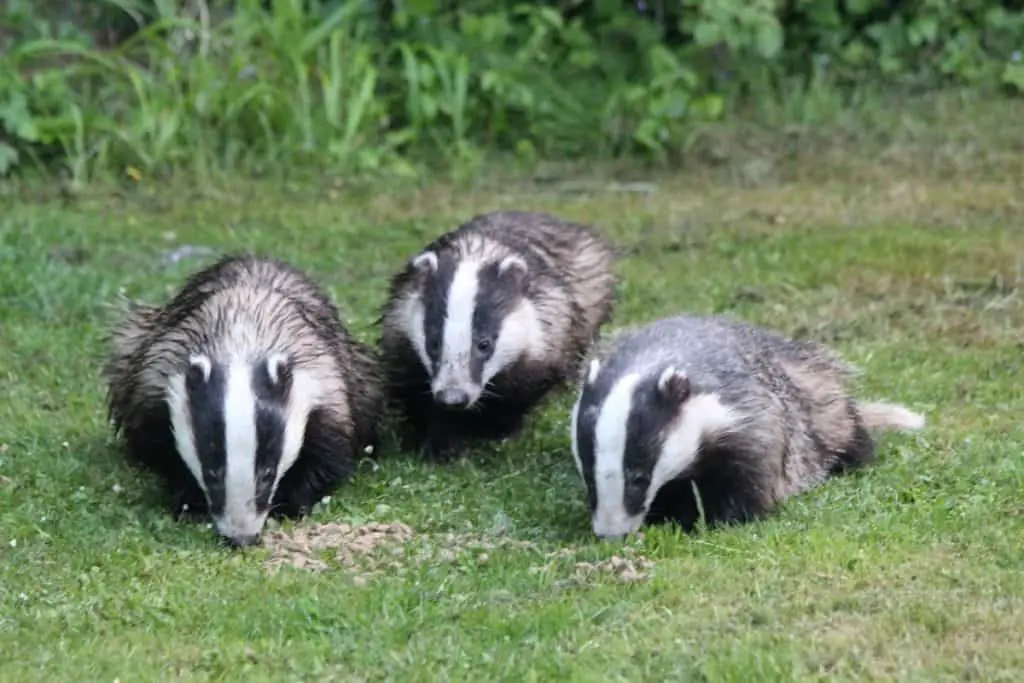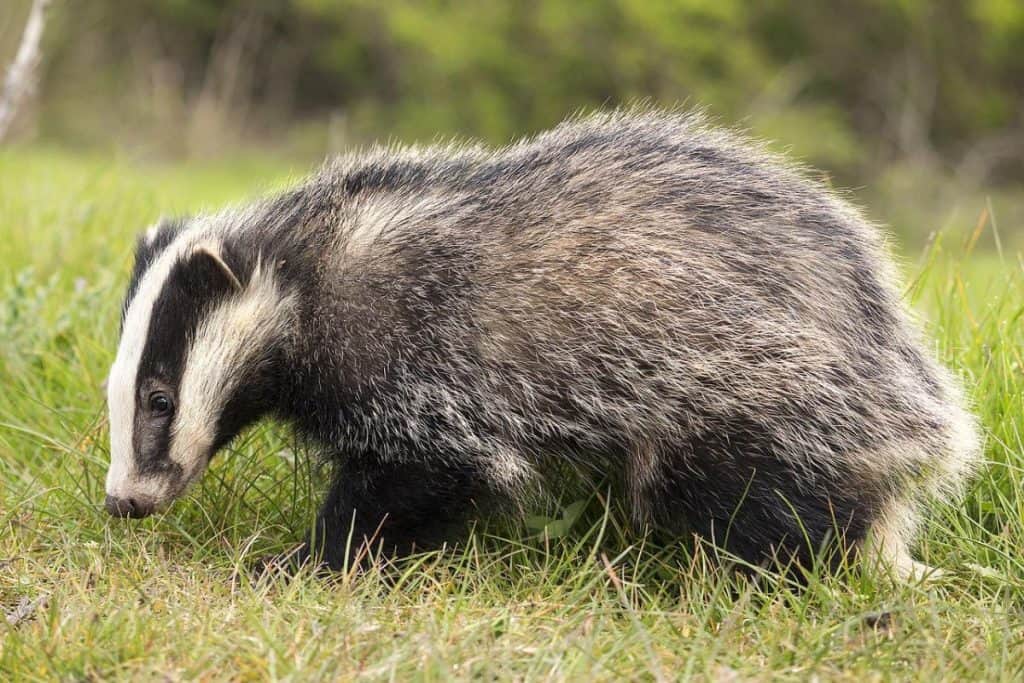Badgers feed alone, although you may see two or more searching for food close to each other. They feed on a variety of food, although like all animals, they have their favourite. Let’s look at the diet of a badger now.
Badgers are opportunistic animals, but their primary source of nutrition is earthworms. They may eat two hundred earthworms in a day and will also feed on other insects. They will also eat small mammals such as voles, rabbits, and hedgehogs. They will feed on carrion, with birds making up a small part of their diet.
If you want to know more about what badgers eat, please read on.

Earthworms
A badger’s leading source of food is earthworms. Badgers can eat a couple of hundred earthworms per day to survive. Earthworms pass through their digestive system quickly and are an easy source of nutrition. Worms are hard to catch as any vibration or movement will make them move back into their tunnels below ground.
Earthworms use setae, stiff hairs that hold onto the soil. These anchors allow the muscles in the front of the body to contract, allowing them to stay attached to the earth and retract quicker. The setae are not digested and can be found in their faeces.
Because worms anchor themselves into the ground, the badger has to be careful not to break the body and waste the nutrients inside. This also leaves a bad taste in the mouth as grit will come out into the badger’s mouth.
I was recently walking along a path at night and noticed a badger in front of me feeding on worms. Well trodden paths can often make a great home to worms.
Badgers have sensitive noses and mouths low to the ground. Worms out in the open make an easy meal for a badger.
Badgers need to be able to locate large amounts of earthworms to survive, and they are excellent at this. Badgers change their feeding grounds depending on the weather and even a change in the wind.
Badgers know when different earthworm species come out of the ground and in what conditions, and damp, mild nights can be perfect for a badger to stock up on worms.
If you see badgers feeding, then you may also notice a fox. While they don’t compete with badgers for food, they will follow them to find a rich supply of earthworms.
Earthworms are an excellent source of water for badgers. Each segment in a worm’s body is mainly filled with water. This allows badgers to go for some time without drinking water.
Any soil and leaves that are eaten simultaneously are expelled in their droppings, giving them a soft, mud-like quality.
Earthworms can be easy to find in the right conditions, with an acre of fields providing a home to over 100,000 worms. Badgers will often come back to the same places to feed, and with over 20,000 worms a year making up part of the diet of a badger, a good field can provide all the food they need.
Mammals
While badgers feed mainly on earthworms, they also feed on small mammals. Badgers are omnivores and will supplement their diet with any small animals that they can find.
Although spines cover their bodies, hedgehogs make an excellent meal for badgers. Badgers use their long claws to feed on hedgehogs, one of the few animals. Badgers are the biggest predator of hedgehogs in areas where they coexist.
Badgers are opportunistic and will feed on animals that they can find. They will feed on voles, including bank and field voles, caught frequently.
Badgers are active when the young of other mammals are being born, and they will feed on the young of others.
Badgers will eat rabbits and hares, rats, moles, and shrews. Rabbits and shrews can generally outrun a badger, but any carrion will be eaten. Any small mammal is at risk of a badger in its area.
Did you know badgers are good for the environment? Find out more here
Insects
I had my garden dug up a few years ago, and I realised after putting out trap cameras that it was a badger that had done it. My lawn had an infestation of cockchafer beetles, and the badger was digging up the larvae to feed on.
Badgers will also feed on dung beetles and can be seen around cowpats to get to them. Many flying insects are also eaten, although usually at the larval stage. These include crane flies and daddy-longlegs.
Badgers will also make short work of wasp and bee nests, feeding on any honey inside and killing most of the adults. Badgers have thick skin and can cope with the stings they receive while feeding on them.
Because badgers are opportunistic feeders, they will feed on any insects they can find.
Did you know badgers are good for the environment? Find out more here

Birds
Badgers eat carrion, and most of the birds they eat are already dead when they find them. Badgers will feed on crows, rooks, and gulls as they are the most likely to be found by them.
Badgers are also known to feed on game birds such as pheasant and partridge, although it is unknown if they catch these or find them already dead.
Because badgers are opportunistic feeders, they will come out after bad weather to feed on any birds that didn’t make it through.
Badgers will also feed on eggs, but they miss camouflaged eggs or nests because of their bad eyesight. This leaves the eggs of ground-nesting birds relatively safe, although foxes may eat them.
Badgers have been known to feed on chickens. However, if the chickens are locked in a coop, they should not be able to get to them. Free-range chickens may be at risk, although they are more likely to be preyed upon by a fox or bird of prey.
Want to know where badgers live? Find out in this article I wrote

